- Leader Hydraulic Pump Co.,Limited.
- Rexroth Hydraulic Pump Bosch Hydraulic Pump Komatsu Hydraulic Pump
- Home
- Stock Categories
- Rexroth Hydraulic Pump
- Bosch Hydraulic Pump
- Komatsu Hydraulic Pump
- Linde Hydraulic Pump
- Hitachi Hydraulic Pump
- Eaton Hydraulic Pump
- Sauer Danfoss Hydraulic Pump
- Vane pumps
- Gear Pumps
- Piston Pumps
- Hydraulic Pump in stock
- Pressure Valves
- Solenoid Directional Valves
- Control Valves
- Check Valves
- Relief Valves
- Directional Valves
- Filter Elements
- Fans Cooling Parts
- Hydraulic Motors
- Pressure Swithes
- Hydraulic Pump Accessories
- Mitsubishi Parts
- Sumitomo Hydraulic Internal Gear Pump
- Yuken Hydraulic Pump
- Germany Siemens
- Daikin Hydraulic Pump
- Vickers Hydraulic Pump
- Denison Hydraulic Pump
- NACHI Hydraulic Pump
- Rexroth Pump
- Rexroth linear
- Rexroth Valve
- Rexroth Pump A10V(S)O & (A)A10VSO (Series 31)
- Rexroth Pump A1VO (Series 10)
- Rexroth Pump A10V(S)O (Series 52)
- Rexroth Pump A10VSO (Series 32)
- Rexroth Pump (A)A4VSO (Series 10 & 30)
- Rexroth Piston Pump A15VSO (Series 10)
- Rexroth Pump AA4VG (Series 32)
- Rexroth Pump AA10VG (Series 10)
- Rexroth Pump AZPF and AZPN
- Rexroth Pump AZPG Series
- Rexroth Pump PGH series
- Rexroth Pump PVV series
- Rexroth Piston Pump PV7 series
- Rexroth Pump VPV series
- Rexroth Pump PSV series
- Rexroth Pump A11V series
- Vickers hyd Pump
- Vickers vane pump
- Dension T6CC vane pump
- Dension PV pump
- Dension PVT6 pump
- Dension PVT10 PUMP
- Dension PVT15 PUMP
- Dension PVT20 PUMP
- Dension PVT29 Pump
- Dension PVT38 PUMP
- Dension PVT47 PUMP
- Dansion P080 pump
- Dansion P110 pump
- Dansion P140 pump
- Dansion P200 series pump
- Dansion P260Q pump
- Dension Worldcup P6W Pump
- Dension Worldcup P7W Pump
- Dension Worldcup P8W Pump
- Dension Gold cup P6P series pump
- Dension Gold cup P7P series pump
- Dension Gold cup P8P series pump
- Dension Gold cup P6R series piston pump
- Dension Gold cup P7R series piston pump
- Dension Gold cup P8R series piston pump
- Dension Gold cup P6 pump
- Dension Gold cup P7 pump
- Dension Gold cup P8 pump
- Dension Gold cup P11 pump
- Dension Gold cup P14 pump
- Dension Gold cup P24 pump
- Dension Gold cup P30 pump
- Parker Gear Pump
- Main pump
- Famous Brand Hydraulic Pump
- Thrust Roller Bearing
- Tapered Roller Thrust Bearings
- Spherical Roller Bearings NTN
- Parker Piston pump PAVC series
- Atos PVPC Series Piston pump
- Vickers Vane pumps
- Parker Piston pump PV020 series
- Dension Vane pump T6 series
- Parker PV092 series Piston pump
- Parker Piston pump PV076 series
- Parker Piston pump PVAP series
- Atos PFED Series Vane pump
- Parker Piston pump PV016 series
- Atos PVPCX2E Series Piston pump
- Atos PFG Series Gear pump
- Dension Piston pump P7 series
- Parker Piston pump PV032 series
- Atos PFGX Series Gear pump
- Parker Piston pump PV040 series
- Dension Piston pumps P6 series
- Parker Piston pump PV046 series
- Atos PFR Series Piston pump
- Parker Piston pump PV360 series
- Komastu Gear Pump
- Dension Vane pump T7 series
- Parker Brand vane pump PVS Series
- Parker Piston pump PVP series
- Parker Vane pump PFVH series
- Dension Vane pump SDV series
- Parker PV180 series Piston pump
- Vickers Variable piston pumps PVB Series
- Parker Piston pump PV080 series
- Parker Piston pump PV140 series
- Parker Piston pump PV270 series
- Dension Piston pump P series
- Sauer-Danfoss Piston Pumps
- Atos PFE Series Vane pump
- Parker Brand vane pump PVD Series
- Vickers Gear Pump
- Parker Piston pump PV063 series
- Original hydraulic pump
- HYDRAULIC PISTON PUMP
- Original Pump
- Hydraulic Pump
- Hot sale's Pump
- Quality Control
- Rexroth Hydraulic Pump
- Bosch Hydraulic Pump
- Komatsu Hydraulic Pump

Home> Company News> Application scope and basic principle of plunger pump
- Product Groups
Rexroth Hydraulic Pump
(7197)Bosch Hydraulic Pump
(8248)Komatsu Hydraulic Pump
(3374)Linde Hydraulic Pump
(8015)Hitachi Hydraulic Pump
(5050)Eaton Hydraulic Pump
(1300)Sauer Danfoss Hydraulic Pump
(1224)Vane pumps
(1335)Gear Pumps
(329)Piston Pumps
(2998)Hydraulic Pump in stock
(95)Pressure Valves
(106)Solenoid Directional Valves
(1142)Control Valves
(421)Check Valves
(125)Relief Valves
(742)Directional Valves
(232)Filter Elements
(810)Fans Cooling Parts
(190)Hydraulic Motors
(90)Pressure Swithes
(30)Hydraulic Pump Accessories
(84)Mitsubishi Parts
(535)Sumitomo Hydraulic Internal Gear Pump
(1113)Yuken Hydraulic Pump
(490)Germany Siemens
(150)Daikin Hydraulic Pump
(973)Vickers Hydraulic Pump
(10867)Denison Hydraulic Pump
(267)NACHI Hydraulic Pump
(497)Rexroth Pump
(5695)Rexroth linear
(592)Rexroth Valve
(3929)Rexroth Pump A10V(S)O & (A)A10VSO (Series 31)
(82)Rexroth Pump A1VO (Series 10)
(25)Rexroth Pump A10V(S)O (Series 52)
(145)Rexroth Pump A10VSO (Series 32)
(9)Rexroth Pump (A)A4VSO (Series 10 & 30)
(11)Rexroth Piston Pump A15VSO (Series 10)
(23)Rexroth Pump AA4VG (Series 32)
(32)Rexroth Pump AA10VG (Series 10)
(14)Rexroth Pump AZPF and AZPN
(73)Rexroth Pump AZPG Series
(12)Rexroth Pump PGH series
(32)Rexroth Pump PVV series
(16)Rexroth Piston Pump PV7 series
(11)Rexroth Pump VPV series
(41)Rexroth Pump PSV series
(36)Rexroth Pump A11V series
(31)Vickers hyd Pump
(115)Vickers vane pump
(60)Dension T6CC vane pump
(91)Dension PV pump
(401)Dension PVT6 pump
(769)Dension PVT10 PUMP
(769)Dension PVT15 PUMP
(1538)Dension PVT20 PUMP
(771)Dension PVT29 Pump
(770)Dension PVT38 PUMP
(562)Dension PVT47 PUMP
(562)Dansion P080 pump
(2306)Dansion P110 pump
(2306)Dansion P140 pump
(2306)Dansion P200 series pump
(2306)Dansion P260Q pump
(787)Dension Worldcup P6W Pump
(1190)Dension Worldcup P7W Pump
(1190)Dension Worldcup P8W Pump
(661)Dension Gold cup P6P series pump
(482)Dension Gold cup P7P series pump
(482)Dension Gold cup P8P series pump
(482)Dension Gold cup P6R series piston pump
(162)Dension Gold cup P7R series piston pump
(162)Dension Gold cup P8R series piston pump
(162)Dension Gold cup P6 pump
(323)Dension Gold cup P7 pump
(323)Dension Gold cup P8 pump
(323)Dension Gold cup P11 pump
(2085)Dension Gold cup P14 pump
(872)Dension Gold cup P24 pump
(1449)Dension Gold cup P30 pump
(1446)Parker Gear Pump
(13)Main pump
(1266)Famous Brand Hydraulic Pump
(12)Thrust Roller Bearing
(9975)Tapered Roller Thrust Bearings
(10027)Spherical Roller Bearings NTN
(639)Parker Piston pump PAVC series
(333)Atos PVPC Series Piston pump
(115)Vickers Vane pumps
(516)Parker Piston pump PV020 series
(612)Dension Vane pump T6 series
(1303)Parker PV092 series Piston pump
(801)Parker Piston pump PV076 series
(47)Parker Piston pump PVAP series
(361)Atos PFED Series Vane pump
(97)Parker Piston pump PV016 series
(400)Atos PVPCX2E Series Piston pump
(108)Atos PFG Series Gear pump
(34)Dension Piston pump P7 series
(569)Parker Piston pump PV032 series
(391)Atos PFGX Series Gear pump
(81)Parker Piston pump PV040 series
(290)Dension Piston pumps P6 series
(531)Parker Piston pump PV046 series
(601)Atos PFR Series Piston pump
(61)Parker Piston pump PV360 series
(74)Komastu Gear Pump
(435)Dension Vane pump T7 series
(528)Parker Brand vane pump PVS Series
(45)Parker Piston pump PVP series
(74)Parker Vane pump PFVH series
(17)Dension Vane pump SDV series
(373)Parker PV180 series Piston pump
(1179)Vickers Variable piston pumps PVB Series
(371)Parker Piston pump PV080 series
(252)Parker Piston pump PV140 series
(660)Parker Piston pump PV270 series
(1114)Dension Piston pump P series
(1203)Sauer-Danfoss Piston Pumps
(763)Atos PFE Series Vane pump
(142)Parker Brand vane pump PVD Series
(21)Vickers Gear Pump
(231)Parker Piston pump PV063 series
(335)Original hydraulic pump
(10)HYDRAULIC PISTON PUMP
(19)Original Pump
(13)Hydraulic Pump
(13)Hot sale's Pump
(6)
- AddressNanshan Distrct,Shenzhen,China
- Factory AddressNanshan Distrct,Shenzhen,China
- Worktime9:00-18:00(Beijing time)
- Phone(Working Time)00852-68515715
- Fax00852-68515716
Piston pump is one of the commonly used equipment in various production enterprises, which is widely used in petroleum, chemical and other production enterprises, mainly used in various media, such as water, oil, coal slurry and other transmission and pressure links. Plunger pump is a very important and critical device for hydraulic system. Its working principle is: the plunger in the cylinder block (sealed working chamber), the previous way of cyclic long-term movement, the movement form will directly cause its volume periodic change. This change will also cause the working medium to be continuously inhaled or discharged, so as to increase its pressure. For the plunger pump, its advantages mainly lie in the following points: first, the rated pressure is high; second, the structure is more compact; third, high efficiency; fourth, convenient flow adjustment. It is precisely because of these advantages that it has a wide range of applications. It can be used not only in high-pressure occasions, but also in various occasions where large flow rate of medium is needed and medium flow regulation is needed. Plunger pump is a reciprocating pump, belonging to a class of volume pumps. Its plunger drive is mainly realized by eccentric rotation of the pump shaft. Because of its reciprocating movement, its suction valve and discharge valve, the use of one-way valves. When the plunger is pulled out, the pressure inside the working chamber decreases, and the outlet valve is closed. When the chamber pressure is lower than the inlet valve pressure, the inlet valve is opened and the working medium (liquid) enters the state. When the plunger is pushed in, the pressure in the working chamber will rise, and the inlet valve will be closed. When the internal pressure is higher than the outlet pressure, the outlet valve opens and pushes the liquid out. When the transmission shaft drives the cylinder block to rotate, the swashplate will pull out or push back the plunger to complete the oil absorption or drainage process.
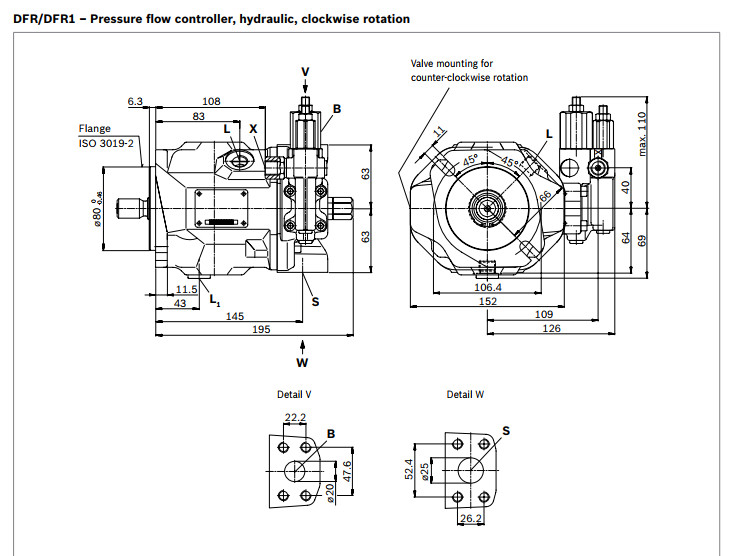
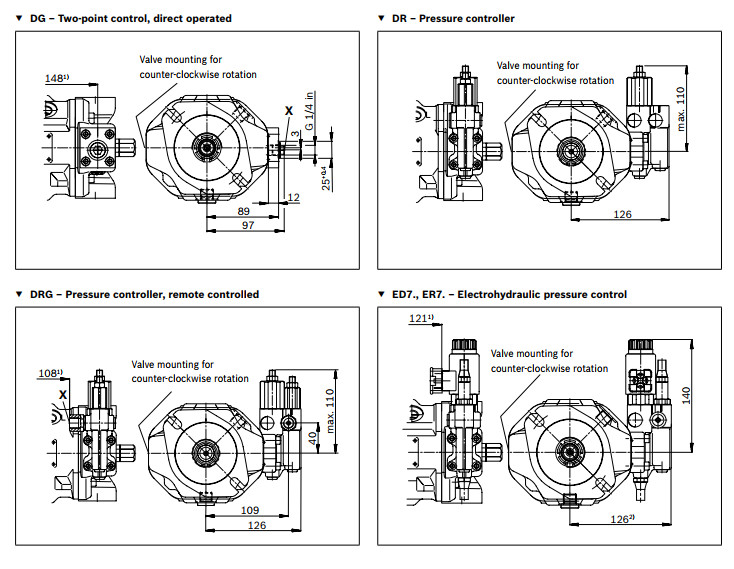

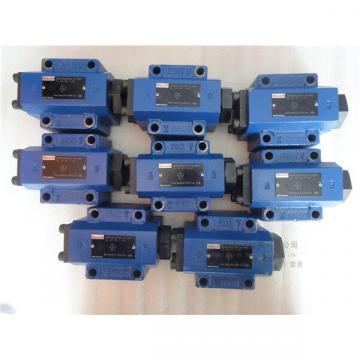 R900442260 SL10 PA2-4X Bosch Rexroth Check valve hydraulically pilot operated
R900442260 SL10 PA2-4X Bosch Rexroth Check valve hydraulically pilot operated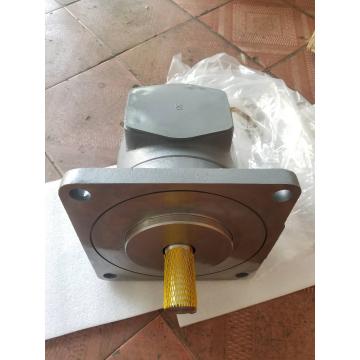 CBT-F430-ALHL High Press Gear Oil pump
CBT-F430-ALHL High Press Gear Oil pump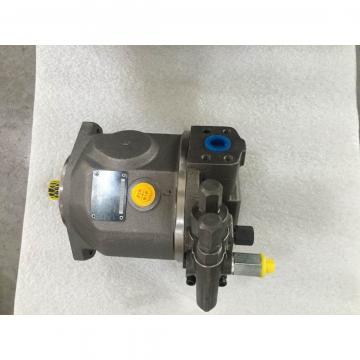 A10VSO28DFR1/31R-VPA12N00 Germany Rexroth Piston Pump
A10VSO28DFR1/31R-VPA12N00 Germany Rexroth Piston Pump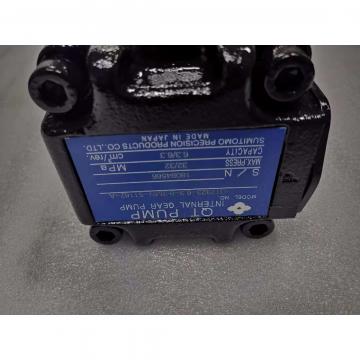 QT2323-6.3-6.3MN-S1162-A JapanSumitomo QT Series Double Gear Pump
QT2323-6.3-6.3MN-S1162-A JapanSumitomo QT Series Double Gear Pump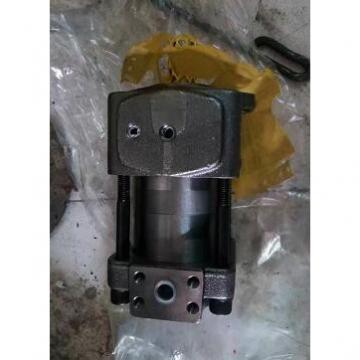 CQT63-80FV-S1376-A Japan Sumitomo Gear Pump
CQT63-80FV-S1376-A Japan Sumitomo Gear Pump